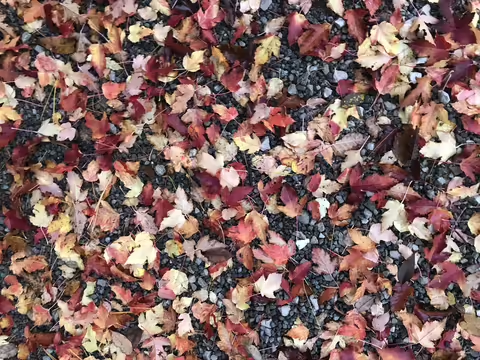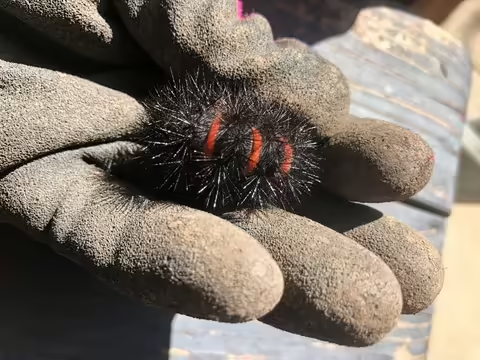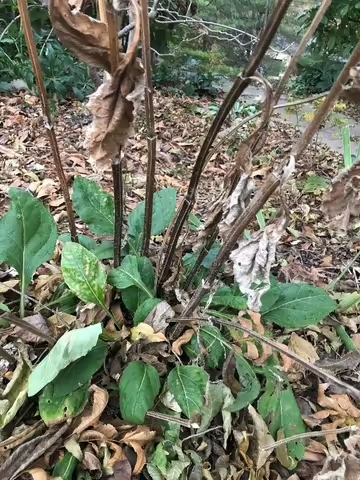The first hard frost has snatched the lushness right out of my jungle, giving it the first real feel of autumn. Leaves are continually drifting down like feathers to the ground, making the ground a mirror of colored leaves from whence they fell. Some perennials appear almost unfazed while others look like a blow torch was in their midst.
It really is a balancing act on how much fall cleanup to do. On the one hand, maintaining an attractive landscape is an overall goal for most of us, but doing so while providing wintering habitat for beneficial insects and wildlife is even better. I start with the leaves. My goal is to keep all my fallen leaves on site to recycle the nutrients and organic matter still contained in them...it’s like getting free slow-release fertilizer. Leaving excessive leaves on your lawn going into winter though is not ideal for a number of reasons, including disease development and inhibition of growth next spring. Leaving all those leaves on your grass is also great cover for turf damaging critters like mice and voles. In my turf areas, I mulch some of the leaves with a mower and allow the little pieces to fall down into the canopy to further break down over time. Mulching the leaves speeds the decomposition process and is less likely to smother the grass if not overdone. If I have more leaves than I can mulch into the standing grass, they are blown or raked up for use elsewhere. Leaves that have fallen on the sidewalks or driveways are blown or raked into flower beds as much as possible. I try to mimic nature and keep the depth to no more than six inches, with any leftover going to the compost pile. It would be an added step and expense, but running the leaves through a shredder would make a beautiful mulch that is more resistant to wind movement. I haven’t pulled the trigger yet on buying a shredder because storage is at a premium at my place. My husband likens us to goldfish: we have grown to the size of our container and unless we get a bigger container, we can’t grow any bigger.
There is another reason to retain leaves in the garden. A number of beneficial insects overwinter as larvae, pupae or adults in leaf litter and loose soil. I commonly encounter larvae like the giant leopard moth (Hypercompe scribonia) or the woolly bear/Isabella tiger moth (Pyrrharctia isabella) in the fall and spring amongst the fallen leaves. Once you realize how many things can be squashed by you mucking about in a leaf covered bed, you tend to take a much less intrusive approach.
At the 2019 Perennial Plant Symposium this past summer, I listened to Laura Ekasetya of Lurie Gardens talk about a new approach they were taking with cutting back perennials in the spring to possibly be more helpful to beneficial insects. Instead of cutting to the ground and mulching spent plants in the spring, they trialed a small area where they retained the bottom 15” of the plants. The reason being some insects like small carpenter bees use standing spent plant stems as nesting sites, particularly the lower portion of the stem. They also observed that new growth quickly concealed the old stubble. I think I might try this as well next spring. For many years, I have resisted cutting back spent perennial in the fall to squeeze out as much benefit as possible for insect and bird habitat. Maybe I can squeeze a bit more by not cutting to the ground next spring. It will be a happy adjustment if I see any sawdust or shavings next to the stems indicating a nesting site.
In reading ‘Pollinators of Native Plants’ by Heather Holm, I noted another way to utilize some of the stems I cut back in the spring for insect nesting material, particularly those perennials with pithy or hollow stems like Indian cup plant, Silphium perfoliatum, or pale Indian plantain, Arnoglossum atriplicifolium. She suggest cutting these plants back in late spring, but she suggest leaving stubble an 18” stubble. Here’s where I may get the added use. She suggests bundling up small batches of the cut stems, and hanging them horizontally in locations that receive morning sun and afternoon shade, and preferable away from vegetation. Like changing your potting soil every two years, she suggests replacing the bundles with new stems every two years to prevent disease buildup. I immediately started borrowing trouble by worrying there might still be a bee or other beneficial insect in what I was throwing out/composting, but in the next sentence she covered that too. She suggests placing the discarded stems in a dark container like a shoe box for a period, and to make sure to punch a small exit hole for any late checkouts.


